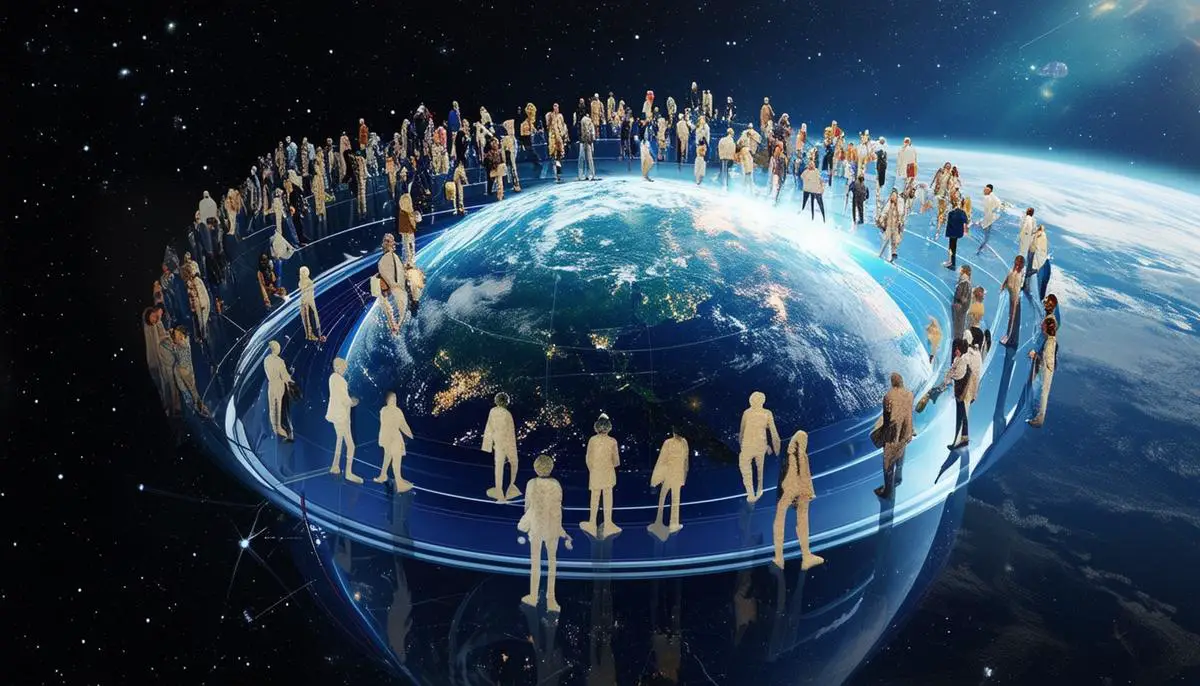Mechanics of Earth's Rotation
Earth rotates from west to east, turning counterclockwise when viewed from above the North Pole. This rotation, completed in approximately 23 hours, 56 minutes, and 4 seconds (a sidereal day), shapes the day-night cycle and our understanding of time. The difference between a sidereal day and a 24-hour solar day stems from Earth's simultaneous orbit around the Sun, demanding an added four minutes to ensure noon aligns with the sun at its highest point each day.
The speed of Earth's rotation varies across its surface, with the equator experiencing a rotation speed of about 1,670 kilometers per hour (approximately 1,040 miles per hour), decreasing significantly towards either pole. This variance contributes to differences in the experience of time and daylight across latitudes.
Universal Time (UT1), linked to Earth's rotation relative to distant celestial objects, forms the basis for the world's timekeeping systems. Modern time standards like Coordinated Universal Time (UTC) integrate precise atomic timescales with adjustments by leap seconds, aligning atomic precision with Earth's estimated rotation.
Time zones break down this concept into practical terms for daily use across the globe. Instituted through international consensus, standard time within each zone approximates solar time at the central meridian. Local time shifts by one hour for every 15 degrees of longitude, aligning with Earth's rotation speed and enhancing global synchronicity for communication, transport, and commerce logistics.
As Earth's rotational speed deviates due to gravitational interactions with celestial bodies, UT1 and UTC periodically account for these changes with leap seconds, ensuring clocks closely reflect Earth's position in its rotation relative to the cosmos. This recalibration underscores the continuous dialogue between terrestrial timekeeping and astronomical events.
Impact of Earth's Rotation on Daily Life
The impacts of Earth's rotation on daily life serve as practical reminders of our planet's celestial motions and the systems created to adapt to them. As Earth spins, it orchestrates a global tapestry of time zones, affecting daily schedules and the framework of international relations.
Time zones facilitate cohesive scheduling across the world, allowing for alignment of business hours and crucial for international trade and cooperation. Financial analysts can schedule conference calls with colleagues in different cities, respecting work and rest cycles specific to each region. Pilots and flight attendants juggle schedules spanning multiple time zones, recalibrating their body clocks to local times, affecting fatigue management and operational safety.
Global telecommunications rely on this time-zoned world, with email communication and digital data flows conforming to these invisible borders. Companies send information across the globe instantaneously, expecting it to be received during business hours, aligning production cycles and collaborative operations efficiently.
However, time zones also introduce complications, particularly with technologies demanding precise timekeeping and synchronization. Global synchronization is critical for economic reasons and for the technologies underlying networks. GPS systems, crucial for navigation and timestamps in financial transactions or data logging, epitomize this. Computers, smartphones, and networking devices require synchronized times to effectively communicate and function within global networks, heavily grounded on the adjustment of time standards like UTC to Earth's variable rotation.
Daylight saving time (DST) adds another layer of intricacy. Originating as an energy-saving measure, DST shifts an hour of daylight, affecting human circadian rhythms, health, and international schedules. In business scenarios, this shift can temporarily unsettle patterns of global collaboration, demonstrating the delicate balance of international relations to time manipulations.
Earth's rotation and our constructed timekeeping systems illustrate a choreography that keeps global activities synchronized. This synchronization, essential yet in flux due to terrestrial motions and human adaptations like DST, necessitates ongoing technological adaptability and understanding of Earth's rhythmic dance within the cosmos. The interaction between Earth's natural cycles and human-engineered time structures continues to shape and challenge how we organize life globally.
Historical Development of Time Zones
The concept of standardized time zones emerged largely in the 19th century due to the imperatives of modern transportation and the necessity for a predictable world. Historically, timekeeping was a local phenomenon based on the sun's position, with each town having its own "mean time." By the mid-19th century, the industrial revolution and expanding networks of commerce and communication, particularly railways, telegraph services, and maritime navigation, necessitated more streamlined timing systems.
American and Canadian railroads were a driving force. On November 18, 1883, known as "The Day of Two Noons," railroad companies instituted a new standard time by setting their clocks according to four time zones across the continent. This step, taken without official sanction, was rapidly accepted due to its practical application in scheduling and operations, reducing thousands of local times into a manageable few.
In global communication, the necessity was further dramatized by complex longitudinal calculations during telegraphic communications, often resulting in delays and inaccuracies. The solution, highlighted at the 1884 International Meridian Conference in Washington, D.C., was to adopt a single prime meridian (Greenwich, England) integrating multiple zones to synchronize times globally.
Aligning times gave predictive and analytical power, enabling better scheduling and logistics planning, essential for exporting regions and coordinating military operations. Social scheduling became feasible on grand scales, based on this systemized way of looking at time rather than localized solar timings. This gave rise to an interconnected global economy reliant on clocks set uniformly across time zones.
This shift from natural timings to a regulated clock-time paradigm wasn't free from critique or resistance, but system adoption showed benefits in standardizing activities from commerce to broadcasting, reducing complications arising from timing errors.
Today's complex network of global scheduling, from flight times to the precision of GPS technology satellites, traces back to these beginnings in railway schedule adaptations. The careful synchronization we experience daily echoes an evolution of how we have intertwined science, economy, sociology, and geography through our journey into organized timekeeping structures.

Earth's rotation is a pivotal element that shapes global synchronization and impacts daily life profoundly. By aligning time zones and standardizing global schedules based on this rotation, we achieve a level of coordination crucial for modern society's functionality. This synchronization reflects an ongoing interaction between natural celestial rhythms and human-engineered structures, emphasizing the importance of precise timekeeping in maintaining global harmony.
- Audoin C, Guinot B. The Measurement of Time: Time, Frequency and the Atomic Clock. Cambridge: Cambridge University Press; 2001.
- Gaddis JL. The Landscape of History: How Historians Map the Past. Oxford: Oxford University Press; 2002.
- Hlavac C. The Development of Standard Time Zones: A Quest for Uniformity in a Mechanized World. Stud Hist Phil Sci. 2020;81:101246.
- Rossum GD. The Hour of Our Time: The Conflict Between Timekeeping and Coordination in the Modern World. New York: Knopf; 2020.
![]()
